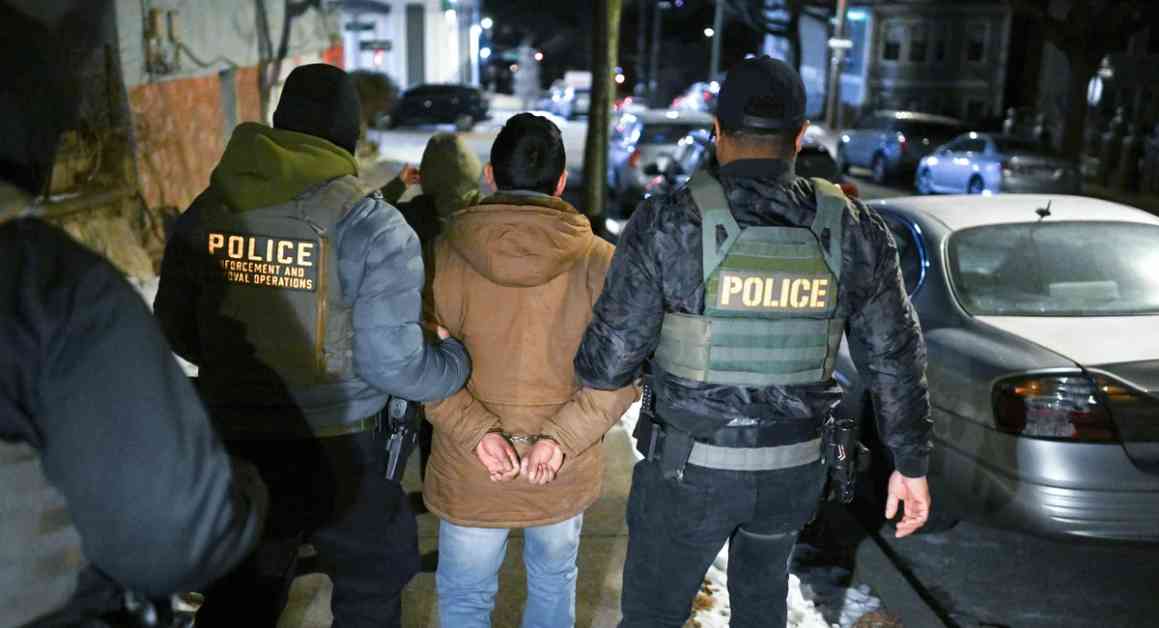New York City’s recent guidance on dealing with immigration officers has sparked controversy and concern among various groups in the city. The guidance, outlined in a memo sent out on January 13, instructs staff at nonprofit-run migrant shelters and other city-related facilities to cooperate with visiting federal immigration enforcement if they “reasonably feel threatened.” This new directive is a significant departure from previous instructions issued by City Hall, which emphasized that the city’s sanctuary protections prohibit the use of city personnel and resources to further federal immigration enforcement efforts.
The guidance comes amidst President Donald Trump’s aggressive push for increased immigration enforcement nationwide, particularly targeting sanctuary cities and jurisdictions that refuse to cooperate with his administration’s plans for mass deportation. In light of these developments, the city of New York is navigating a complex and rapidly evolving situation, balancing the safety of employees and individuals under their care with legal obligations and concerns about community trust.
Concerns and Reactions
The new guidance has raised concerns among shelter providers, union representatives, and advocacy groups in the city. Manny Pastreich, president of 32BJ SEIU, representing over 9,000 security officers employed at city-owned and contracted facilities, criticized the policy as inhumane and contrary to city and state laws. He expressed worry that members should not have to decide whether to cooperate with immigration officials in potential threatening situations.
The Legal Aid Society also voiced its opposition to the new guidance, stating that it could dissuade families from seeking shelter and erode trust in city institutions. The society emphasized that the city’s sanctuary laws are designed to prevent the use of city resources for federal immigration enforcement.
City Council Response
City Council leadership, including Council Speaker Adrienne Adams, Deputy Speaker Diana Ayala, and Immigration Committee Chair Alexa Avilés, called on the Adams administration to reverse the guidance. In a joint statement, they labeled the memo as highly irresponsible, confusing, and dangerous to New Yorkers and the city’s workforce. The council leaders highlighted the policy’s inconsistency with city laws and its potential negative impact on the community.
Throughout the city, nonprofit shelter providers and city officials are grappling with the implications of the new guidance. A recent virtual meeting between Department of Homeless Services staffers and shelter providers underscored the confusion and tension surrounding the issue. Andrew Coamey, senior vice president at Housing Works, expressed concerns about the conflicting guidance from DHS and his organization’s policy, creating an awkward position for staff members.
As the Trump administration continues to push for increased immigration enforcement, the city of New York faces challenging decisions regarding the balance between safety, legal obligations, and community trust. The evolving landscape of immigration policies at the federal level has significant implications for local jurisdictions and their efforts to protect vulnerable populations while upholding the law.
In a rapidly changing environment, city officials, advocacy groups, and community stakeholders must work together to navigate these complex issues and ensure the safety and well-being of all residents. The ongoing dialogue and collaboration are essential in addressing the challenges posed by shifting immigration policies and protecting the rights of individuals in the city.












